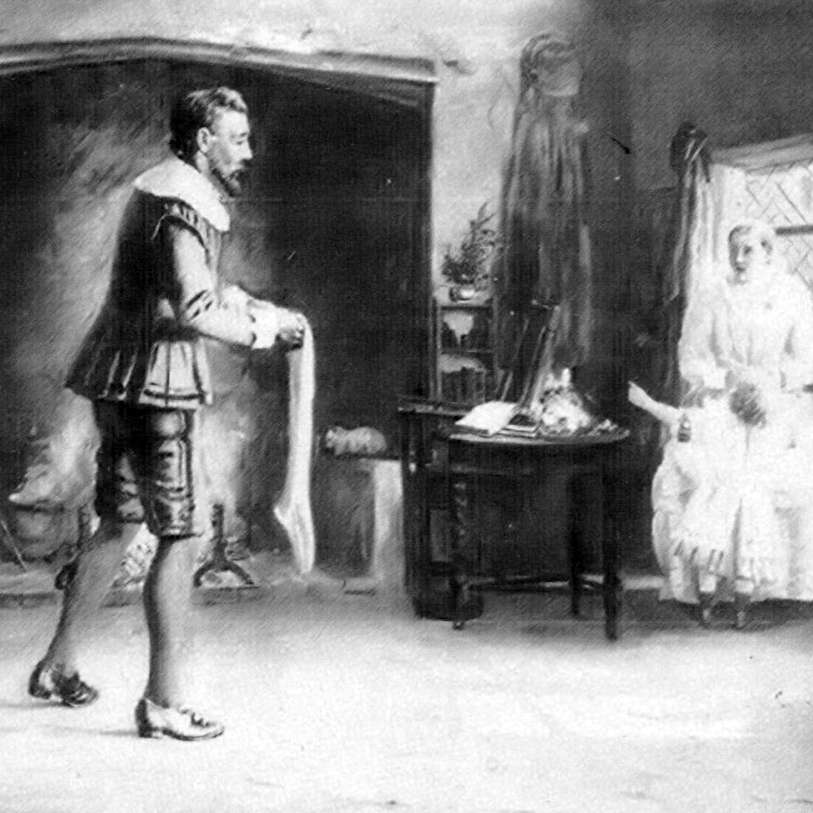Invention of the sock knitting machine: Why couldn't they persuade the Queen to patent it?
A romantic love story underlies Lee's invention. Here is the romantic story leading up to the invention of the sock knitting machine:

Socks, which is one of the basic clothing needs, is not only a covering material, but also an extremely important piece of clothing for human health. Socks have the shortest lifespan among the clothing items that people consume and use in large numbers throughout their lives.
The first stockings did not look like they are today. It was sewn from leather or wool fabric in accordance with the shape of the feet, and then combined with trousers. Over time, the below-knee part of this style of clothing became thinner and differed from the fabric above the knee. At the end of this habit, which continued until the beginning of the 1500s, trousers and socks were separated and started to be used separately. Knitted clothes as a commercial commodity began to be produced in Paris in the 13th century. Previously, knitting was the work done in houses. In 1366, the first knitting lodge was established in Paris. Knitting became one of the 6 most important handicraft lodges in 1514.
William Lee (1563–1614) was an English clergyman and inventor who devised the first stocking frame knitting machine in 1589, the only one in use for centuries. Its principle of operation remains in use.
FIRST MACHINE
Until the end of the 16th century, stockings were hand-knitted. Hand-knitted socks reached their current shape in the 17th century. The first sock knitting loom was made in England in 1589. After William Lee, an English priest living in the village of Calverton, near Nottinhamshire, invented the first hand and foot operated knitting machine, socks began to be produced on the machine. A romantic love story underlies Lee's invention. Falling in love with a poor girl he met while he was a student at Cambridge University, Lee immediately wants to get married. But his fiancee has to knit socks by hand all night to support her house. Lee considers developing a faster sock knitting technique by following her hand movements to get his lover out of this hard work. ”Why only one loop is thrown in one movement?" Thinking that it may be possible to finish the whole row in one go, Lee looks for ways to knit more than one stitch at the same time. However, it was necessary to use fingers to make loops with the awls used in hand knitting. To do this on the machine, Lee considered the safety pin. At the end of this invention, it was possible to produce only 6 times faster than handcraft on the developed metal-wood mix loom. It could cast 8 stitches in an inch. This was suitable for woolen threads but was too coarse for silk. Lee's invention forms the basis of knitting technology today. The machine invented by Lee is presented to Queen Elizabeth I and a patent application is filed. But the queen refuses to grant a patent on the pretext that the stockings knitted in Spain are coarser than the stockings sewn from silk fabric. The socks produced were found to be too coarse for "His Majesty's feet".
Stubborn Lee continues his work and designs a new type of machine that is thin enough to use silk. The new machine can spin 20 stitches in one inch. He applies for a patent again. But the answer is the same. The Queen refuses to grant a patent on the grounds that it will harm the hand knitting workers financially, increase unemployment and cause monopoly.
Thereupon, Lee, along with his brother, tried to develop the French economy with King IV. He settled in Rouen, France, at the invitation of Henri. It produces socks for 8 years with its loom there. Accepted by the king of France and receiving a patent for his machine, Lee signed a contract with Pierre de Caux for the production of hosiery knitting machines on February 16, 1612. Thus, the first commercial production of the hosiery machine was made in France. The last written document about Lee is a French document dated 1615, stating that he lived in Rouen and was engaged in the hosiery business.
After the death of Lee, who went to France, Germany and Saxony, his workers and, according to some claims, his brother returned to England, causing England to monopolize the production of hosiery machines. Thus, until Jean Hindret, who learned the features of the English hosiery machine and founded a company in 1656, he managed to keep the machinery manufacturing under his own monopoly. On the other hand, Fournier started making silk stockings in Lyon (France).
Although Lee's invention did not accelerate the production of stockings, handmade silk stockings decorated with embroidery and stones continued to be used for many years, especially in elite Europeans. After Lee, it was necessary to wait another century for the development of socks knitting technique. The most important of the improvements made during the 18th century was made by an inventor named Jedediah Strutt. Strutt worked on Lee's looms and used additional apparatus to make rib knitting on these looms. As a result, the knitted form was more flexible and wrapped around the leg. Strutt and his three partners received a patent for their invention (1759). Although progress was slow, this made him rich. The machine they produced became known as the “Deby Rib” and the socks produced on these looms soon became popular.
